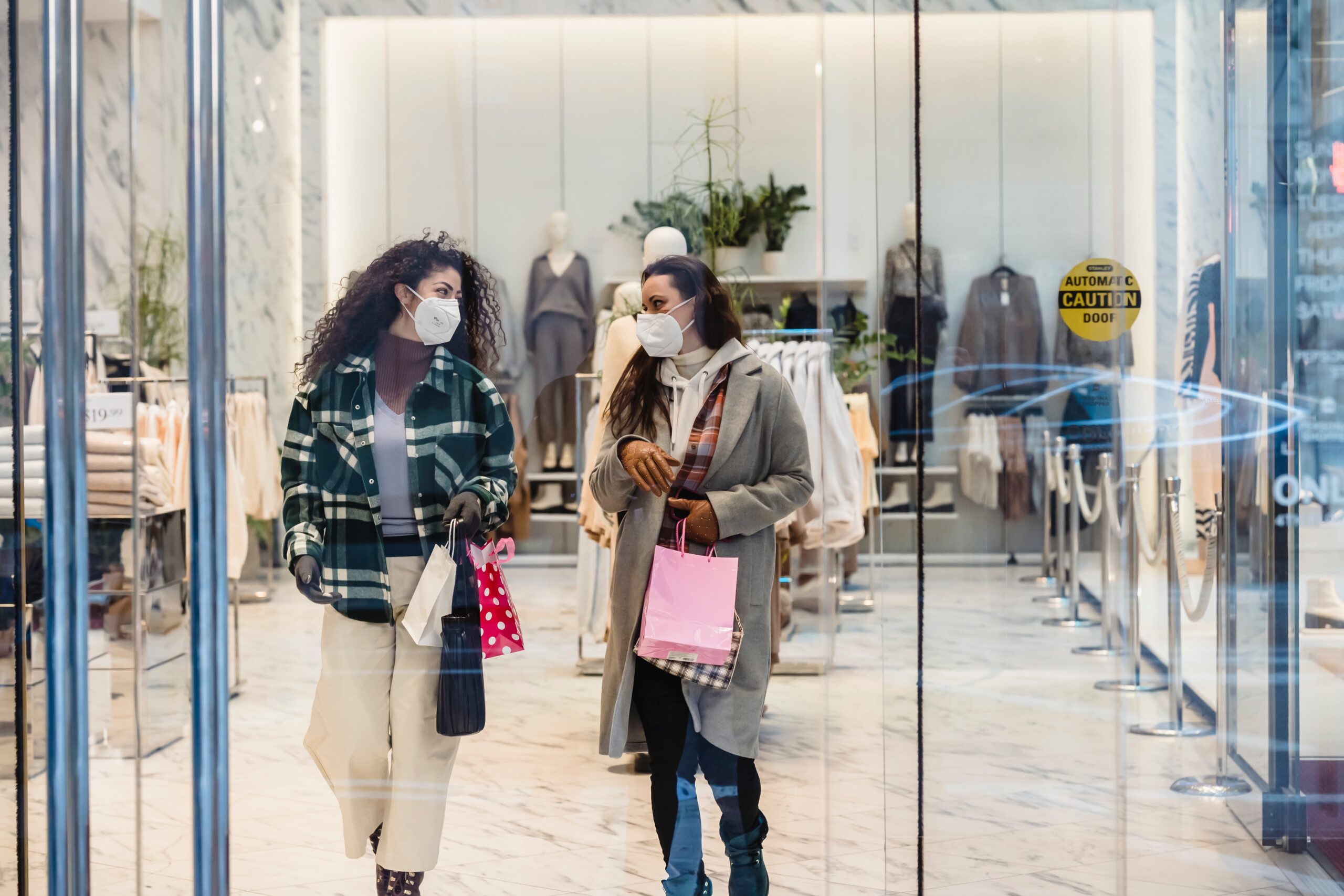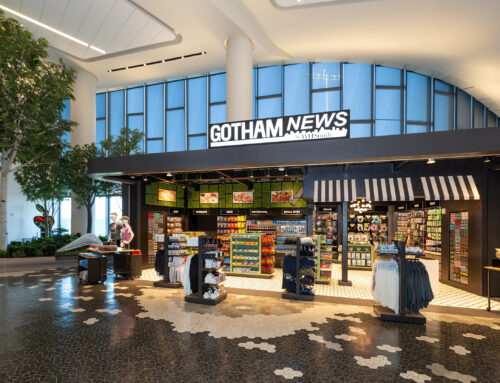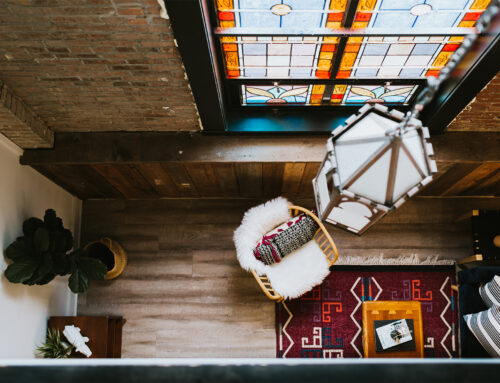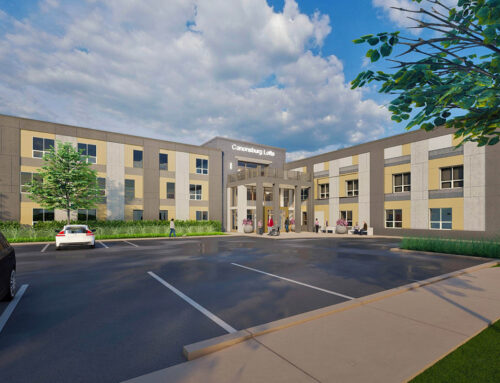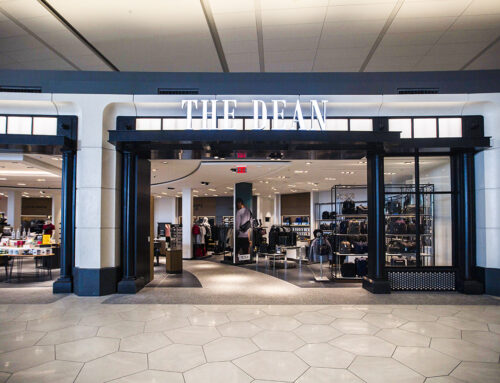The last year and a half have seen some drastic changes in the architectural world. However, no changes have been more significant than those in the retail market.
The Covid-19 pandemic forced the market to pivot, focusing their efforts less on brick-and-mortar stores and more on digital sales, spatial efficiencies, and the wellbeing of customers and employees. As we transition back to a state of “new normalcy,” the retail world is once again evolving. This time, encompassing the feeling of shopping pre-pandemic while providing the necessities we have come to expect throughout the pandemic. This blog aims to inform you about these design concepts and what to expect in stores as we move beyond the pandemic.
Pre-Pandemic
Retail pre-pandemic was an experience. At least, that is how we designed these spaces. You went to the mall to see and be seen. You met friends to pass the time, to browse, to see what was new. Its exploratory nature made shopping fun even if you did not realize it was happening. Stores tended to focus on customer flow and optimal product display; as long as they met specific design standards and building codes, nothing was off-limits.
There were people, music, aromas, and unmasked friendly sales staff greeting you on your third step inside the door. All things that now seem a little odd and at times dangerous. While many of us are eager to return to those sensory encounters filled with nostalgia and impulse buying, we need to be aware of the implemented adjustments to keep staff and fellow shoppers safe and healthy.
Throughout Pandemic
In early 2020, the Covid-19 pandemic created an almost immediate reaction from retailers to maintain product movement and, more importantly, sales income. With limited in-store availability for consumers, retailers amped up their online sales platforms. Monolithic retailers like Amazon, Target, and Walmart monopolized delivery systems, which had difficulty keeping up with demand. Small businesses that had previously relied on in-person sales had to find new ways to draw customers.
Working with both, we had to rapidly change our understanding of what it meant to go shopping – this included valuable space both inside and outside the store. Covid forced us to rethink the experience from car to cash register and back.
INSIDE, you have seen revamped circulation plans, queuing allocation, and spacing indicators in action, in addition to plastic dividers, sanitization stations, and a more spaced-out sales floor. Each takes careful consideration when designing a new or retrofitting store. However, the most significant challenges come with online order fulfillment. Stores required ample space (often near the entry or cashier) for quick, accessible pick-up stations where orders can be packed and securely stored daily.
OUTSIDE, dedicated space for curbside pick-up/delivery has taken the highly sought-after, closest parking spots. Additional signage directed patrons where to go and the proper procedures to take.
It became quite a bit confusing and completely changed the shopping experience – making it less experiential but more convenient.
Post-Pandemic
With so many strategies rapidly put into place, retailers are now assessing which of these new necessities will remain post-pandemic — looking to blend experience and convenience.
With the acceleration of digital shopping, in-person retail must offer the same convenience as online platforms while fully utilizing the advantages of brick-and-mortar. Furthermore, as the functionality of the physical store is re-established, retailers will inevitably use digital UX design principles in their store experience. Examples of this include online consultations, self-checkouts, contactless payments, and virtual sales floors + fitting rooms.
Furthermore, intelligent in-store mobile shopping is looking to be a part of that future. Real-time inventory, wayfinding, digital coupons, easy checkouts, product reviews, QR codes, and social media or impulse purchase prompts can all be part of the in-store mobile app experience. With digital wallets becoming more a part of everyday life, these purchases can be both timely and straightforward.
What won’t change? The sensory experience of trying on clothes in a fitting room and the personal engagement remain advantages to the consumer that can’t be underestimated. While online buying and selling have been the norm for the past 18 months, shoppers are eager to get out again, and many have the cash to spend. Consumers want to return to the times of “see and be seen.”
In a post-pandemic world, retail is about flexibility, adapting and serving both in-person and online consumers. As we move forward, retailers will need to be vigilant while acclimating the experience to meet the needs of today’s shopper. While e-commerce offers convenience, physical store locations offer a sensory adventure. As stores open fully, the ease and convenience of online shopping will have to be maintained while enhancing the physical in-store experience to keep drawing the consumers back for compelling shopping experiences.

Author
Rozlynn Roman
Retail Client Manager
